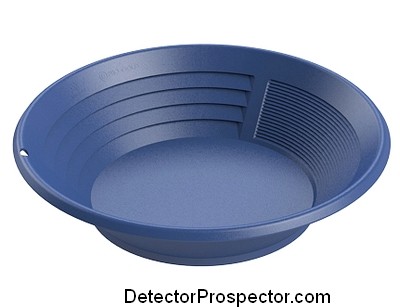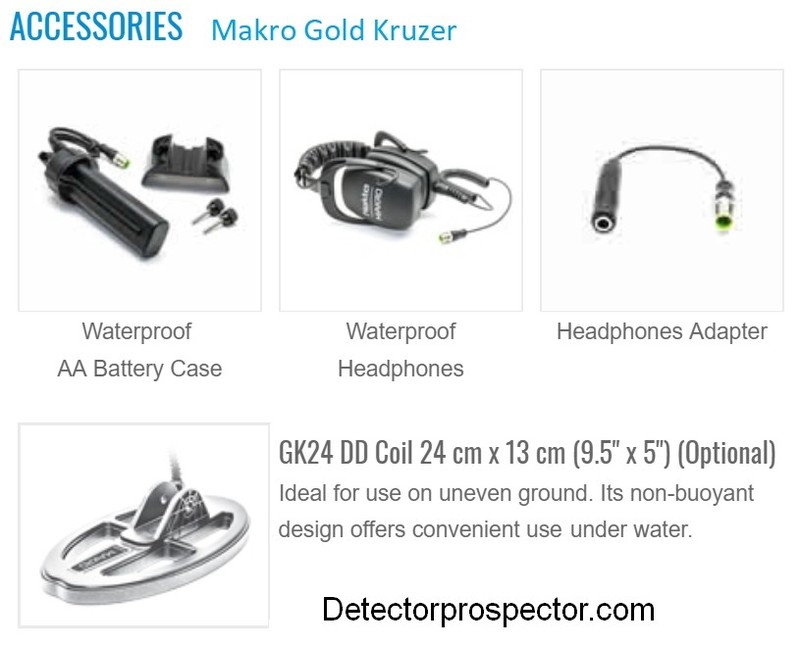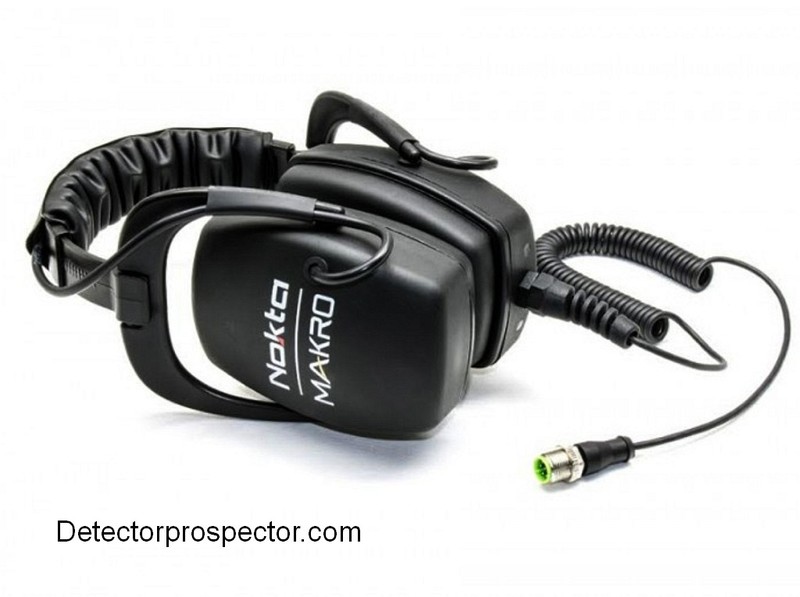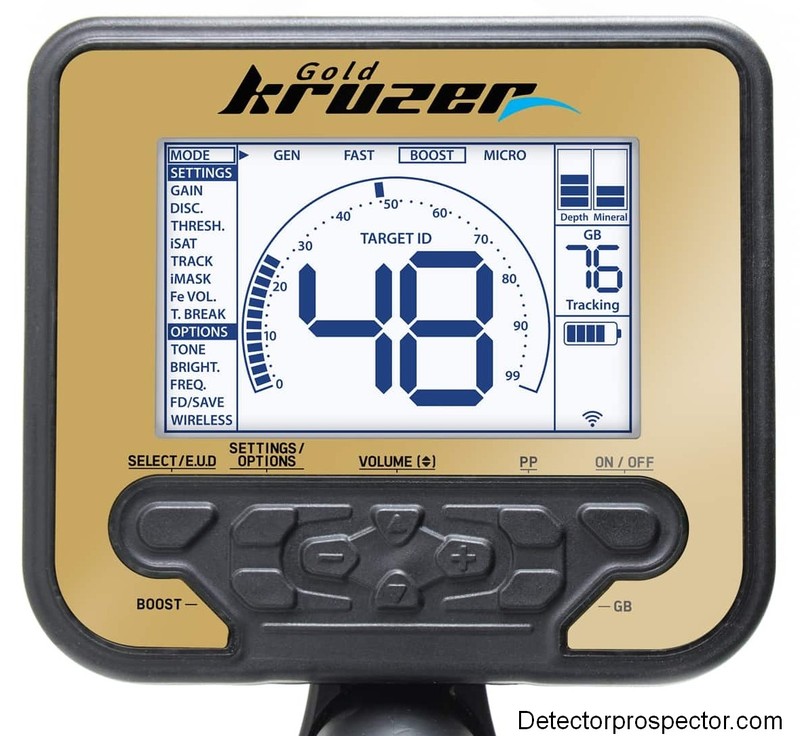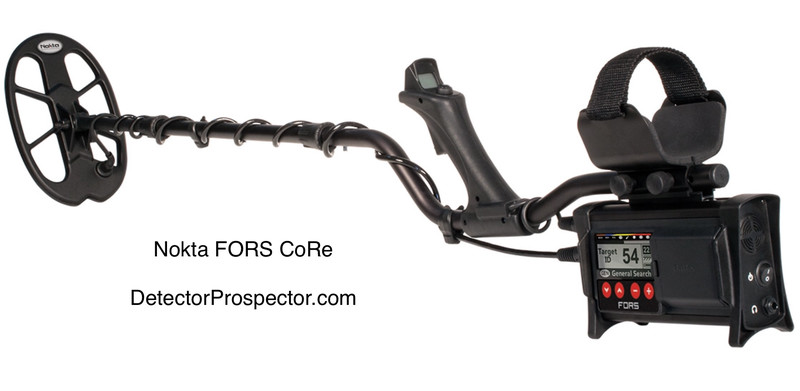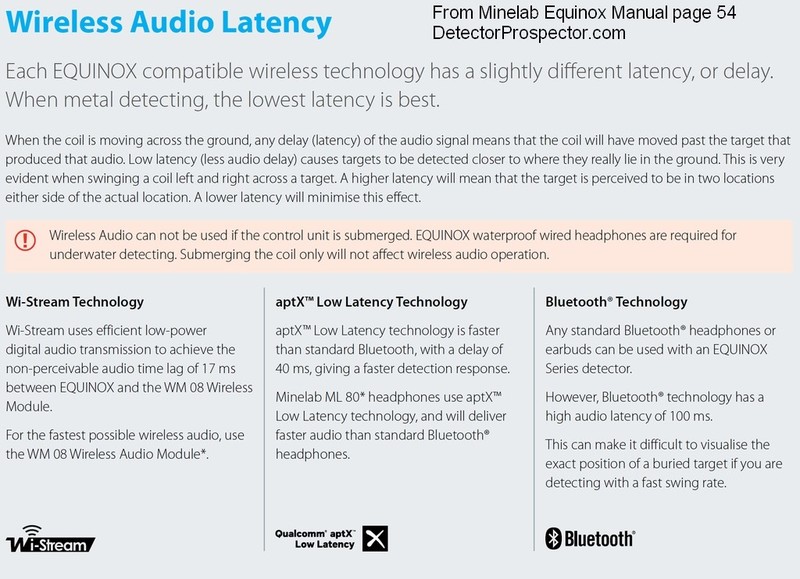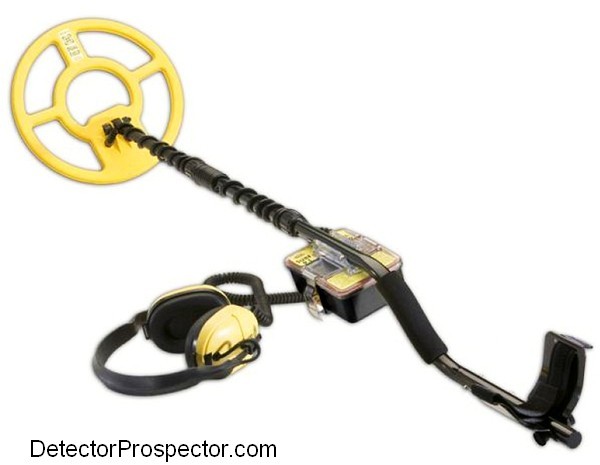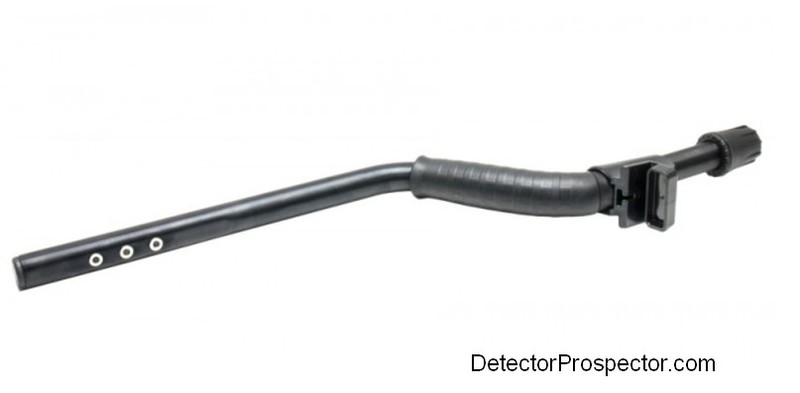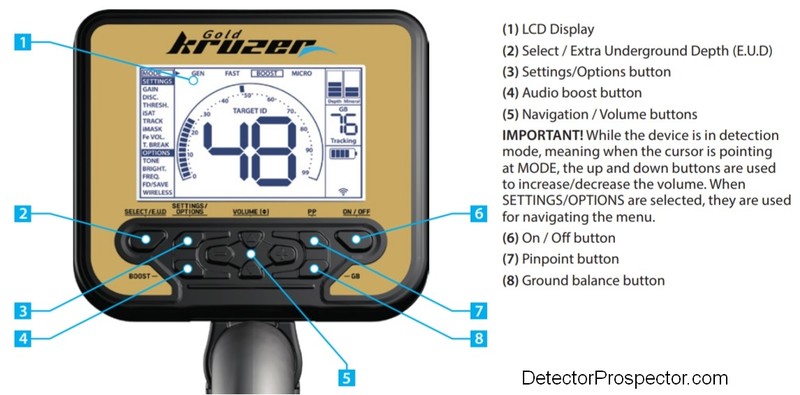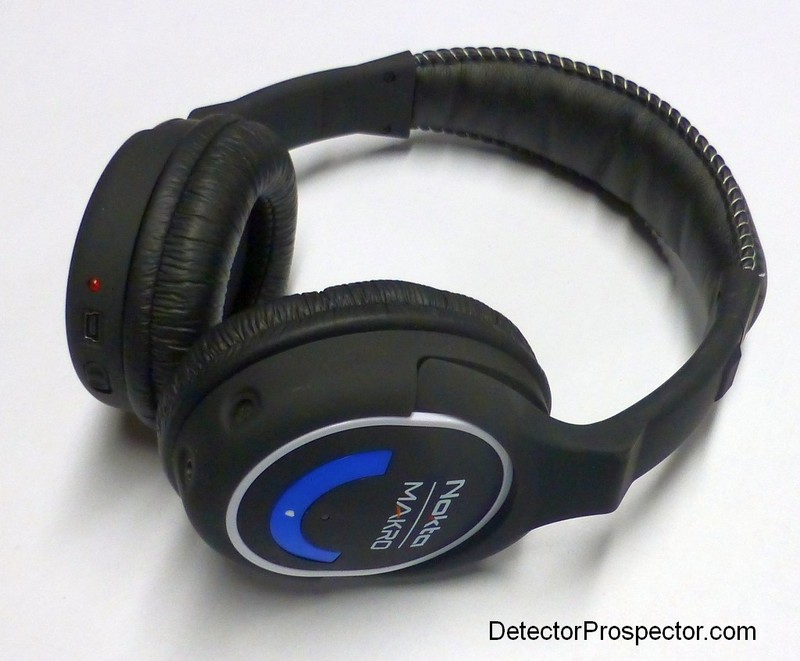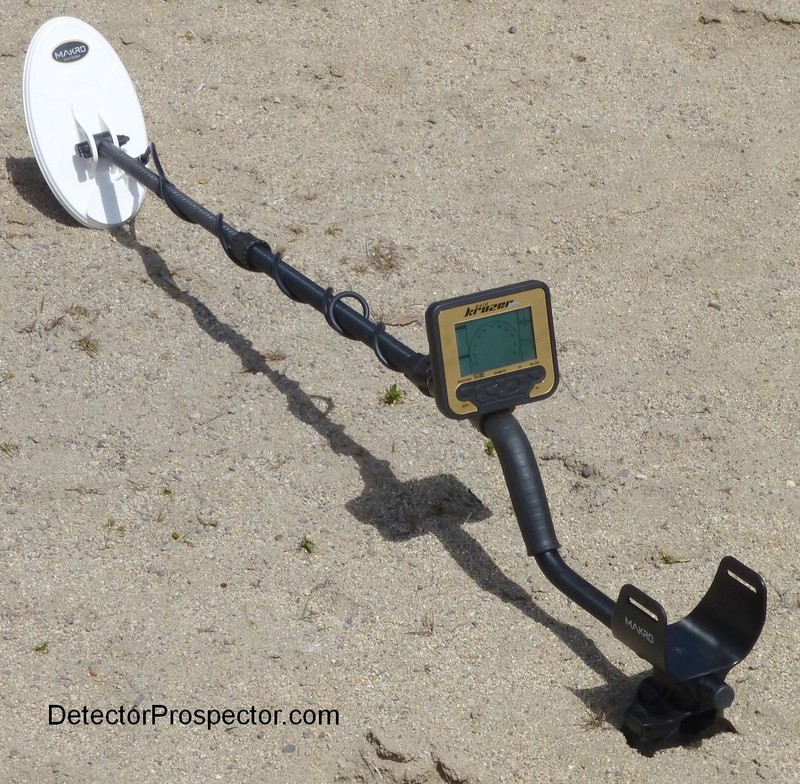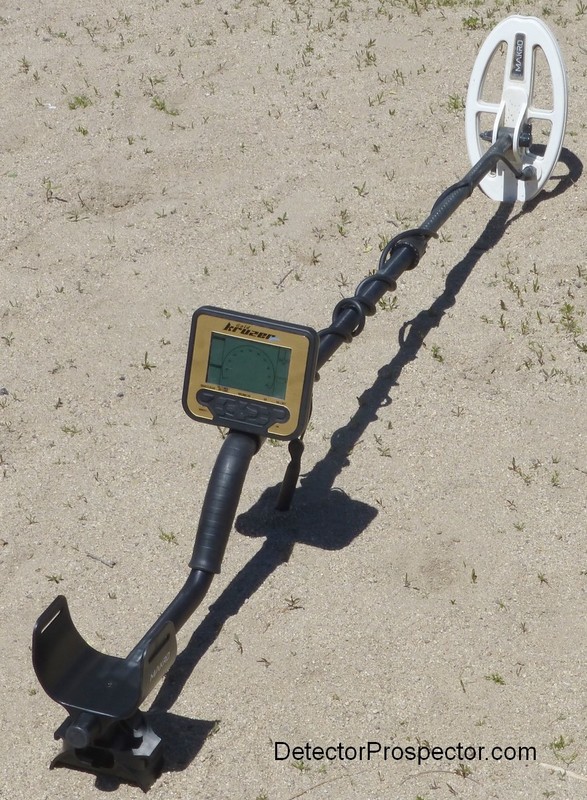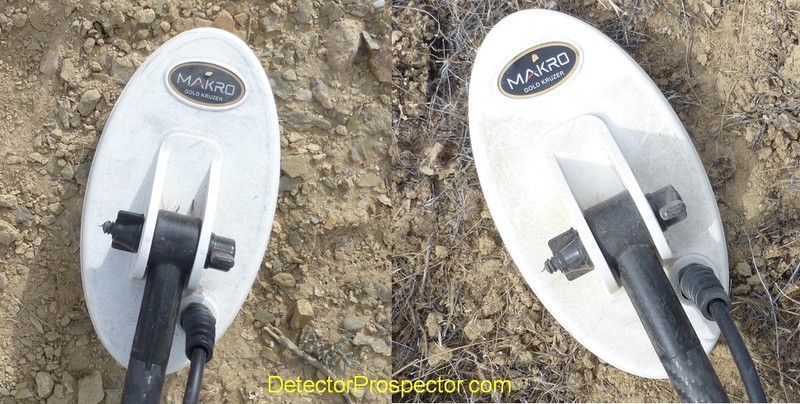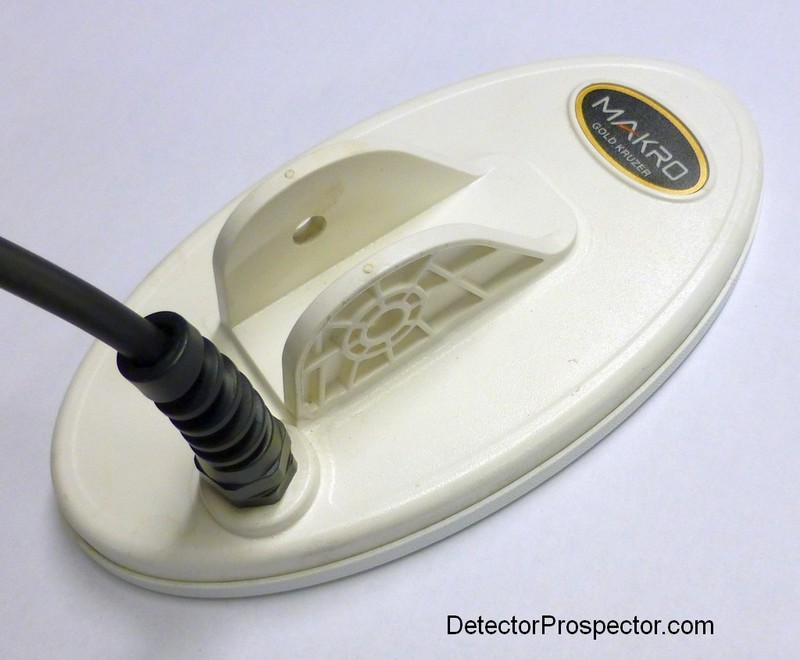-
Posts
19,781 -
Joined
Content Type
Forums
Detector Prospector Home
Detector Database
Downloads
Everything posted by Steve Herschbach
-
In celebration of Father’s Day, we (Minelab) have a great competition for all the wonderful Dads out there! To support our Minelab fathers, we want to hear about your family experiences detecting. You could win a USD $500 Minelab voucher and backpack filled with Minelab accessories! Enter here: https://www.minelab.com/father-s-day-competition-2018 This competition will run from June 12th to June 26th. Terms and conditions apply.
-
Great post, can't add anything to that - my thoughts exactly! About User Profile Button
-
The gold pan is the basic miner's tool. They are used for prospecting and testing of deposits for heavy minerals. The final cleanup of most sluicing and dredging operations is done with a gold pan. For some, gold panning is a mining method in itself. To find gold, a beginner needs nothing more than a gold pan and some basic tools. While many associate steel pans with gold mining, steel pans today are mostly sold to the arts and crafts market and as souvenirs. Plastic pans are molded with riffles that aid panning and are colored to help show the gold. Green is considered the best color as it not only shows gold well but also the blacks sands that one is attempting to separate from the gold. Some pans feature a recessed bottom referred to as a "drop center". This creates a catch trap around the bottom of the pan to hold the gold. Some panners prefer this design while others feel it also holds undesired material so both styles are popular. Plastic pans can be molded with "cheater riffles" that make it easier to pan and still not lose the gold. A 14" gold pan is about the right size for most adults, while most children would probably be better served with a 10" gold pan. The ''standard'' steel gold pan of old was 16'' wide at the top, 10'' wide at the bottom, and 2.5'' deep. When full, and level with the top (a ''struck pan''), it would hold about 336 cubic inches, or 0.0072 cubic yard. In theory, this means that 140 pans equal a yard of material. In reality, packed gravels ''swell'' when removed from the ground. A swell of 20 to 25 percent is average. It can therefore take from 150 to 200 pans to process a yard of material. The figure used most often is 180 pans per yard. Assuming about ten pans per hour, a good panner should be able to pan about a half-yard a day. A very proficient panner working easy material may be able to pan up to a yard a day. Needless to say this would be back-breaking work! In good hands, the pan is one of the most efficient gold recovery devices available. In fact, panning samples that show substantial amounts of extremely fine float gold has misled many a miner. This is gold so small that although it can be recovered with a gold pan, it will wash out of most simple sluice boxes and gold dredges. Anyone wishing to mine for gold needs to become proficient with a gold pan. It is an invaluable tool for testing, and for the cleanup of larger scale equipment, such as sluice boxes. There is some skill involved in gold panning, however, and the big mistake most people make is in not learning how to pan before going out for the first time. Gold pans old and new - classic 16" steel pan (rusted) and square riffled plastic LeTrap pan Find a tub large enough to move the pan around inside the tub. Obtain a few flakes of gold, or lacking gold, use small flattened lead shot. The gold or lead flakes should be about 1/16" in diameter or smaller. Fill the tub with water, and fill the pan level to about 1" short of the top with sand, gravel, and small rocks. Some actual stream gravels are best. Carefully count out a number of lead or gold pieces and push them into the material in the pan. This is the key thing about this process. It is necessary to start with a known number of pieces in order to gauge how well the panning process is going. Ten flakes is a good number to use. There are lots of ways to pan, but all that is important is getting rid of that sand and gravel while keeping those sample pieces. Submerge the pan just below the surface of the water, and allow the water to soak into the material. It may be necessary to stir the material up somewhat to wet all the material in to pan. Pick out any larger rocks at this time. Then shake the pan vigorously side to side and front to rear, all the while keeping it just under the water and basically level. The goal is to get all the material in the pan moving vigorously and very soupy. The gold or lead is much heavier than an equal size piece of sand, and so with all the material moving around the test samples will quickly sink to the bottom of the pan. The next step involves taking the pan of material and tilting it forward, away from the panner, and scooping some water up out of the tub. The goal is to try and make a wave similar to that seen on a beach. Scoop the pan into the water and then lift the pan while tossing the water away. The water should ride up the tilted pan, and then as the water flows back out of the pan it will carry some material out with it. Getting comfortable while panning can be challenging! The secret is in keeping the material in the bottom of the pan stationary and letting the water wash off the top layer in the pan. Do not dump the material out of the pan; wash it out of the pan. Three or four of these washing actions take place. Then the pan goes back to the level/submerged position for another round of vigorous shaking. Then back up, tilt forward, and scoop/wash the material. And that is it, over and over, until only a few spoonfuls of material remain in the pan. Watch the material carefully while washing for a glint of gold or lead. If a piece is seen, stop and shake it back down into the bottom of the pan. If the pieces are seen often, it means the shaking action has not been vigorous enough to sink the samples to the bottom of the pan. More care must be used when washing as the last bit of material remains in the pan. One wrong scoop and everything in the pan will go in the tub! When only a spoonful of material remains, swirling the material around in the bottom of the pan with a small amount of water will reveal the pieces of gold (or lead). A very handy tool at this point is the snuffer bottle. The snuffer bottle is a plastic squeeze bottle with a tube inserted into in such a fashion that small items can be sucked into the bottle but cannot escape. This makes it easy to spot your samples, and then suck them up while getting as little sand as possible. When all the pieces have been captured, dump material still in the pan into the tub. Then take the cap off the snuffer bottle and dump out the captured pieces back into the pan. It should now be very easy to separate the test samples from the tiny amount of sand remaining. Now count them! All the original test pieces should be captured. If not, rinse everything out of the tub into the pan and start all over. The first goal is to get to where the test pieces are reliably recovered every time. When that point is reached, the next goal is to try and pan faster, to speed up the process. Beginning panners take incredible amounts of time on a single pan when they are learning, sometimes 15-20 minutes or more. But with practice it should take no more than a few minutes to work a pan of material. Gold panning championships are measured in seconds, not minutes. If this kind of practice does not take place before going out to do some actual gold panning, the chances for any kind of success are very minimal. The new prospector will have no idea if there was gold in the material they have chosen to pan. When nothing is found, they will have no idea if it is because of poor panning technique or just because there was no gold to start with. It is very important to have confidence so that when a particular spot is sampled with a pan a few times and nothing is found, the decision is then made to try panning somewhere else. Video - Basic Panning Equipment & Panning Techniques One item that can really help the panning process is a screen. Screens are used to remove rocks from material before panning, aiding considerably in the panning process. Screens are designed to fit into or over the pan. Choose a screen size that will eliminate most material while not being so small that gold will not pass through the screen. A screen with a 1/2" hole size is safe for most locations. If all you anticipate is small gold, a 1/4" hole size will eliminate more worthless material quickly. Consider carefully before using a screen any smaller than 1/4". It is good practice to thoroughly wash material through the screen with vigorous shaking, then to quickly flip the screen over and dump it out where you can take a quick look at the discarded material, in case a large nugget has been accidently screened out. The last thing you want to do is toss the screened material out into deep water, and see what you think is a large nugget flying out with the rocks! Other items handy for gold panning are rubber gloves for protection from cold water, rubber boots, a small shovel or large scoop, a small pry bar and of course a snuffer bottle. And a bottle to put the gold in. Do not use glass, as it can be too easily dropped and broken. Next is the question of where to go gold panning. Always attempt to go where gold has already been found, as stumbling on an unknown gold deposit is not likely to happen. Be sure that the area is open to the public, or that permission is obtained from whoever has jurisdiction over the property. For most visitors with limited time it will be best to stick with known public sites. For a list of panning sites in Alaska visit ourPublic Mining Sites page. When panning, it usually will make more sense to spend extra time and effort filling the pan with quality material. For example, splitting bedrock crevices and cleaning them thoroughly can take some time, but the material produced will usually have a better chance of producing a good showing of gold than simply filling the pan with a couple shovels full of bank material. Panning can produce substantial amounts of gold, but the material must be chosen carefully for good results. Good Luck and Good Panning! ~ Steve Herschbach Copyright © 2009 Herschbach Enterprises
-

New 61 Khz Makro Gold Kruzer
Steve Herschbach replied to Steve Herschbach's topic in Nokta / Makro Metal Detectors
Well, June it is, with the Makro Gold Kruzer now available from at least some U.S. dealers. -
Now that's what I call recovery with style - good on you Skate!!
-

Can’t Access Advanced Tone Break Functions
Steve Herschbach replied to JohnD's topic in Minelab Equinox Forum
Yeah, but on the flip side for many people $250 is not that much to end up not having regrets over something missed or left out. And for people like me who sold a CTX with full accessory coil complement once I got the 800 - well, lots of people are putting cash IN their pocket because they bought an Equinox, not the other way around. I could literally buy two Equinox 800 detectors and still be over $1000 ahead of where I was with the CTX plus 17" coil, 6" coil, 5" x 10" coil, spare lower rod, and underwater headphones. Even with buying discount brand new that's over $3000 worth of detecting gear. Equinox 800 at $899 = cheap date by comparison, even with a full complement of accessory items. Tones like hand grips and rod designs are personal preferences with no right or wrong answers. -

Can’t Access Advanced Tone Break Functions
Steve Herschbach replied to JohnD's topic in Minelab Equinox Forum
It’s funny you mention that Chase. I am the first to tout that in 5 tone mode a person with an 800 can vary all the tones, break points, and tone volumes. Yet in reality I almost always use 50 tone mode where these options are not available. Outside of gold prospecting a 600 will do almost every single thing I have been doing equally well as the 800. I have to admit that is partly out of laziness. I like doing full factory resets regularly and so prefer my setups to be simple. I could create some whiz bang custom 5 tone setup, but it would get wiped on a full reset, and have to be entered all over. I find it easier to just go to 50 tones and get with it, and ultimately I am convinced 50 tones is better for me anyway. To reiterate, if you use 50 tones, half the advanced functions are not accessible even on the 800. I also almost never use the manual Noise Cancel, User Profile, or even mess with the Iron Bias. I don’t use the WM 08 module either. It really just comes down to Gold Mode, and outside of that a 600 really would do me just as well as an 800. -

Can’t Access Advanced Tone Break Functions
Steve Herschbach replied to JohnD's topic in Minelab Equinox Forum
What the other guys said. The 600 does not have many of the “Advanced Functions”. Here is a quickie guide to the differences. Items circled in red are “800 only”. And more details here. -

Park 1 Or Park 2 For High Conductors??
Steve Herschbach replied to Dan(NM)'s topic in Minelab Equinox Forum
Big problem? You hunt and find a lot of half dollars, large silver rings, or other large silver on edge with other detectors? Of course not, because those targets are rarer than gold nuggets. That’s not to say the issue is not a problem or does not exist, but puffing it up into a major flaw is not the right answer either. All detectors struggle one way or another with on edge targets. This issue was first noted way back in February, but gets rediscovered every month, each time with this “wow, look what I discovered” post that simply repeats what people who have been paying attention have known for months. Not only is this a minor issue, but any continued hammering away at it is nothing more than trolling at this point. It’s been going on four months now after all. Any mention of it going forward will be moved to the thread that is now this forums “official thread” on the subject... http://www.detectorprospector.com/forums/topic/6645-i-just-did-a-coin-on-edge-test/ Will Minelab address this in an update? Possibly, but as Chase has noted care must be taken not to break something else in the process. In the meantime it would be a real shame if a focus on this is keeping anyone from going out and using a great detector to make great finds. -

Underwater With The Equinox 800
Steve Herschbach replied to Treasure_Adventure's topic in Minelab Equinox Forum
Great report. It sounds like detecting in Hawaii - the hot rocks there give VLF detectors fits and are good at hiding targets that only a PI can reveal. Obviously finds can be made but it can be a noisy go deciding what signals are good and which are not. Much as I like the Equinox for water hunting it will not replace a PI for the worst stuff. Personally I would recommend a higher recovery speed in hot rocks. Your problem is not absolute depth but relative depth, and a higher recovery speed will reduce noise and let the machine see targets between and next to hot rocks better. -

Makro Gold Kruzer Review
Steve Herschbach replied to Steve Herschbach's topic in Nokta / Makro Metal Detectors
I tried to focus on differences between the Gold Racer and Gold Kruzer pointing out features unique to the Gold Kruzer, plus mentioning possible concerns like coil ears, which were an issue in the past. If I forget some key thing, just ask. Except for any "take an hour and go test this for me" stuff - I am up to my eyebrows in alligators right now. To reiterate, here are the package contents so far as what actually comes in the box with the Gold Kruzer for the current internet price in the U.S. of $749 Pretty much everything you need. Key accessory items to consider would be the waterproof port to 1/4" adapter for anyone wanting to plug standard headphones into the Gold Kruzer. There is the external AA battery pack for "just in case" or off grid use. The waterproof headphones for those wanting to stick the detector underwater, and the one accessory coil available at this time (5" x 9.5" DD). Closeup of the waterproof headphones. These are shipping now to distributors and should already be available to order online. And finally, if you need spare parts, here is the current list of available parts.... -

Rye Patch Nugget Shoot Sep 15, 2018
Steve Herschbach replied to Cal_Cobra's topic in Detector Prospector Forum
That’s the story anywhere. Though actually if I had to place bets on being able to find gold almost anyplace a hot VLF is usually the ticket. The tiny bits are the common bits, and they are usually left behind by the PI operators. Most prospectors are usually after quantity, and one decent nugget makes up for hundreds or thousands of tiny nuggets. Scrubbing around with a hot VLF and small coil is time consuming and you can’t cover ground at any decent rate, but it is usually the way to go if just finding a little bit of any size gold at all is the goal. You don’t find many hunts with prizes that are totally free, so it’s hard to go wrong with this one. I have never participated in a planted hunt myself though. Just never had any interest in it, free or not. Latest Rye Patch thread -

Nokta Coils For Nugget Detecting
Steve Herschbach replied to KOOPDOG50's topic in Nokta / Makro Metal Detectors
Honestly, not really. The coil selection you have is very good. The hard part now is getting one of those coils, most likely the smaller ones, over a piece of gold that is sufficiently shallow that it can be detected. Therein lies the true challenge of nugget hunting. Rough rule of thumb - big coils for big gold, small coils for small gold. Difference Between Nokta FORS Gold and FORS CoRe -
If you have over an ounce found so far I would say you are doing just fine. Keep it up, and welcome to the forum!
-

XP Deus Team USA Metal Detecting Show Episode 2
Steve Herschbach replied to Steve Herschbach's topic in XP Metal Detectors
And here is Episode 1 from April 26, 2018 for those who missed it..... -
Equinox 800 in the Desert, Gold Monster 1000, and Nuggets.... Part 1 Published on Jun 11, 2018 Nugget Shooter (Bill Southern) Took the EQX 800 out to the goldfields for a run, impressed so far...
-
Published on Jun 8, 2018 We are proud to share with everyone the XP Deus Team USA Metal Detecting Show Episode # 2! The response to Episode #1 was overwhelming and we believe this one is even better! XP Deus Team USA is a metal detecting show that features team members from across the U.S. who use the XP Deus, one of the top metal detectors on the market. If you love detecting you will love the show!
-
You could use two together to totally bypass the Equinox wireless system. Or you can use one in receiver mode as a receiver box for the built in Equinox aptX low latency Bluetooth. What it can't do is replace the WM 08 in full, since the WM 08 is a receiver box for the even faster Minelab proprietary system. Standard Bluetooth - up to 100 ms aptx Bluetooth - up to 40 ms Wi-Stream (WM 08) - up to 17 ms
-

Platinum At Last!!!!!!!!!
Steve Herschbach replied to Rivers rat's topic in Metal Detecting For Jewelry
Very nice - congratulations! Platinum is a special find for sure, and a Cartier at that. -

MX Sport Comes Now With Waterproof Headphones
Steve Herschbach replied to Ridge Runner's topic in White's Metal Detectors
Actually all underwater detectors came with waterproof headphones until recently because they were all hardwired to the detector! Like with White's Surf PI. It's only in recent years that waterproof connectors have become commonplace and reliable enough that we now have removable headphone options. -
The following is a very detailed review of the new Makro Gold Kruzer... but first a little back story. I was asked to review a new gold detector in the fall of 2014 from a company I had never heard of before then – the FORS Gold by the Nokta company based in Istanbul, Turkey. I was pleasantly surprised to find the Nokta FORS Gold to be a very capable 15 kHz VLF detector that could serve well not just for nugget detecting, but almost any detecting tasks. The FORS Gold did have some odd design quirks, like the use of mechanical rocker switches instead of touch pads. I listed a few of these things, expecting that would just be the way it is. I was almost shocked when within a short period of time Nokta fixed or changed every item I had mentioned in my review as possibly needing improvement. This was unusual as normally once a machine has gone into production manufacturers are extremely resistant to design changes, especially changes in the physical design. It was a sign of what people have now found to be fact – that this company is serious about listening to their customers as a prime driver for product improvement. New Makro Gold Kruzer It was revealed that Nokta had a sister company called Makro, and the two officially combined forces shortly after I made my review. In other words, both Nokta and Makro now share the same ownership and management, but continue to be marketed separately under the two brand names. The detector models that each sell are unique, but there is an obvious sharing of the underlying technology between some models that the two brands sell. I had commented at the time that I would prefer a more standard configuration for a LCD based detector rather than the non-standard configuration as presented by the FORS Gold. By the fall of 2015 I was using the new Makro Gold Racer, which incorporated many ideas I had lobbied for over the years with detector manufacturers. I had been trying for some time to get somebody to create a metal detector that ran at nugget detecting type frequencies over 30 kHz but with a full target id system. It seems strange now but at that time nobody made such a detector. The Makro Gold Racer was quite unique in 2015 by offering a detector running at 56 kHz that also offered a full range LCD based target id system and dual tone based audio discrimination modes. This made it a detector useful not just for nugget detecting, but low conductor hunting in general for relics and jewelry. It is even a halfway decent coin detector for regular park type scenarios. The versatility and well thought out control scheme scored points with me, and I still have the Makro Gold Racer even after selling most of my other detectors. It seems that the moment the Makro Gold Racer hit the streets, that everyone else was working on similar ideas, as other detectors running over 30 kHz but with a full feature set started to appear on the market. High frequency detecting is suddenly in vogue for more than just gold nugget detecting. The one thing obvious now about the Makro / Nokta partnership is that they never sit still, but continue to work on and release new models at a pace that puts all the other manufacturers to shame. The companies are also big believers in seeking public feedback and then implementing the suggestions to create better products for their customers. This is readily apparent in the progression I have personally witnessed in going from that original Nokta FORS Gold to the new 61 kHz Makro Gold Kruzer just now hitting the market. In less than four years the company has gone from “catching up” to meeting or surpassing detectors made by other companies. The Makro Gold Kruzer has a full suite of functions, is fully waterproof, incorporates built in wireless headphone capability, and can be firmware updated over the internet. That short feature list alone puts the Makro Gold Racer in a very select group of detectors offering those same 21st century “basic features” that were lacking in almost all detectors made in the last century. The Makro Gold Kruzer obviously builds on the Gold Racer feature set with the following key differences. The Gold Racer runs at 56 kHz and the Gold Kruzer at 61 kHz, one of the highest frequencies available in consumer metal detectors. This continues the focus on detecting small low conductor targets. The Gold Kruzer is waterproof to 5 meters (16.4 feet) whereas the Gold Racer is not waterproof at all. Finally, the Gold Kruzer adds a three tone hunt mode, taking things up another step from the dual tone modes available on the Gold Racer. Now let’s look at the Makro Gold Kruzer in detail. Makro switched things up in that the Gold Kruzer comes with two coils, a 5.5” x 10” concentric coil, and a 4” x 7.5” DD coil; both include scuff covers. The 5.5” x 10” concentric coil, which was an option offered for the Gold Racer, has been redesigned and cut from 1” thick to ¾” thick and the weight reduced to 384 grams (13.5 oz). The coil is hollow and therefore slightly buoyant, so the 25% reduction in thickness is quite welcome in reducing that buoyancy to where it is basically unnoticeable underwater. The little 4” x 7.5” DD coil is a solid epoxy filled coil which works extremely well in smaller coils where epoxy filling does not result in too much weight. The small DD coil weighs 368 grams or 13.0 oz. There is one accessory coil available at this time, a 5” x 9.5” epoxy filled DD. This coil weighs 14.3 oz or 404 grams. It should be noted that because of the frequency change and with the Gold Kruzer using waterproof connectors, that Makro Gold Racer coils will not work on the Gold Kruzer. Makro has also learned lessons as regards coil ear durability. The coil ears on the Gold Kruzer are about twice the mass of those on my older Makro Gold Racer. Taller, wider, and thicker – these extra beefy coil ears should all but eliminate breakage issues. 4” x 7.5” DD coil showing beefed up ears The Makro Gold Kruzer employs a fairly standard “detector pod on an S rod” design forgoing the underarm battery box used on the Gold Racer. This confers a large advantage when it comes to waterproofing the detector in that only the pod has to be sealed. The change from AA batteries to a built in sealed LiPO rechargeable battery also aids in eliminating battery doors, which are always at risk of leaking. The three piece S rod itself is quite stout with no flex or wiggle. The cross hatch carbon fiber lower rod is not only strong, but lends an air of high tech quality to the look of the detector. The Gold Kruzer does not have the separate underarm battery compartment and in handle vibration mechanism featured on the Makro Gold Racer. This means the pod is totally self contained and can be removed from the handle assembly. This in turn allows for other rod options and the ability to break the detector completely down fitting in a small backpack or carry on bag. When the stout rod is combined with the beefed up coil construction you have a design that should survive those spills a person can take when working in the surf and there the detector ends up acting like a walking stick for support. It has been interesting to watch the company experiment with different handle designs. It is a thankless task because you never can please everyone. For me at least the handle / rod may be the best yet from Makro, with a molded hard rubber grip that will serve very well for a detector that may see underwater use. I personally found the Nokta Impact handle to be large for my hands and the smaller Gold Kruzer handle near perfect. Others may feel just the opposite so there you go. The arm cuff is a little different. It is narrower than some – good for me but maybe not so much for somebody with huge forearms. The adjustment is non-standard, with the arm cup sliding up and down the upper rod over a set of threaded holes. A small screw inserted into the top of the armrest and into one of these threaded holes secures the armrest in place. Kruzer upper rod showing cuff adjust holes and hand grip (control box removed) A unique feature on the Gold Kruzer is an optional external AA battery pack that can provide extra operating time in the field should the internal rechargeable battery go dead. The pack is designed to be held into the bottom of the detector armrest / stand by a separate plastic cover bracket that is held in place with two screws. I found the holes these screws go into will fill with sand if this bracket is left off, so I advise installing the bracket even if the external battery pack is not in use. The external battery pack with bracket is an option and so dummy screws or plugs should be installed to keep the screw holes clean and free of debris by those who down not have the bracket. I don’t think most people will ever need the external battery pack as long as the detector is regularly charged after use. It is a very nice touch however, especially for off grid use, as all you need is the external AA battery pack and a box of AA batteries to off grid for as long as the batteries will last. Some people may want the optional battery pack for travel into the field just in case the battery runs short on power in the middle of a hunt. The port where you attach the external battery pack also acts as a port to attach a USB style charger cable. The detector is charged using this cable by employing the included USB wall charger. You may also use most USB charging adapters and newer computer USB ports. The USB cable also allows the Makro Gold Kruzer to be attached to a computer so that updates can be made in case any bugs are found in the future. This update feature is very nice insurance that should be standard on all new detectors. Another item that should be standard on all new detectors is built in wireless headphone capability. Makro uses a proprietary low latency system that exhibits no discernible lag at all. A really nice thing about being proprietary is there is no pairing process. All you have to do is enable the wireless feature on the control box, turn on the headphones, and boom, you are in business. The downside is you only have one choice of headphones – the included Makro wireless headphones. These are a nice, light set of phones but they are just a bit too small to fit over most people ears. I have fairly small ears and they still rest on instead of over my ear. The sound quality is good, but like most wireless headphones they seem less “bright” than wired headphones. All in all the wireless headphones are quite good however and a pleasure to use. Makro wireless headphones The Makro Gold Kruzer does have a waterproof speaker with decent volume that can be used instead of the wireless headphones. If you prefer other headphone options, be sure and get the optional waterproof port to ¼” headphone adapter cable. This cable attaches to the same port used for charging and software updates and allows any wired headphones to be adapted to the Gold Kruzer. The LCD display is well laid out with a very large target id number displayed. The other setting indicators might be a little harder for those with poor eyesight to make out, but should present no issues once the layout is learned. One big change from the Gold Racer is that the four large navigation buttons, trigger switch, and rotary dial power / volume switch have all been replaced by ten small buttons on the control panel. All the buttons can be reached and controlled by the operators thumb, but the small size and closeness of the buttons may make for some navigation errors early on, and especially when trying to change settings underwater or with gloves on. Makro Gold Kruzer display and controls The Makro Gold Kruzer User Manual is available for download so I will refer you there for all the little details. What you have in the Makro Gold Kruzer is a hot 61 kHz metal detector waterproof to 5 meters (16.4 feet). The Gen (General) mode is a fairly standard VCO audio all metal gold nugget detecting circuit. The Gold Kruzer in Gen mode is very reminiscent of other hot gold nugget detectors running in the all metal prospecting mode. The Gen mode acts exactly like one would expect a threshold based all metal mode to function. There is a nice smooth threshold that gives feedback about the ground and reacts to hot rocks with classic nulling signals and small nuggets with that classic “zip-zip” VCO audio. Voltage Controlled Oscillator (VCO) audio increases both in volume and pitch when a target is detected, giving a distinct response very common on many gold detectors. The only thing different here is that since the Gold Kruzer has an LCD readout; you can get target id number results while running in all metal Gen mode. The audio is far more sensitive than the meter however, so do not be surprised if the deepest and smallest of targets give no target id information. In a break with the Gold Racer the Fast and Boost modes are not dual tone modes, but instead are silent search (no threshold) single tone modes. Items either signal audibly or not based on the current discrimination settings. The discrimination setting, like that of the Gold Racer, is a simple up and down control. Everything above the setting gives an audio signal of “beep”. Anything below the discrimination setting level is rejected or ignored with no sound at all. The Gold Kruzer has no notching capability i.e. the ability to pick and choose individual target id numbers for rejection. Fast mode is just what it sounds like – a fast setting for working in really dense trash. Target recovery speed has been increased at the expense of outright depth, but sheer depth is useless where target masking is the main problem. Boost mode is exactly the opposite. Boost is the deepest discrimination mode on the Gold Kruzer but due to the increased sensitivity is more suitable for less mineralized ground and sparser targets. It should be obvious that the Makro Gold Kruzer is all about gold. This explains the shift from dual tone to monotone audio in the Fast and Boost. Dual tones as employed in the Makro Gold Kruzer can be problematic when hunting the smallest gold targets, especially in highly mineralized ground. It is hard for a detector to get a clean separation of ferrous and non-ferrous targets when the targets are very small. This is because the actual dividing line between ferrous and non-ferrous is not a line at all, but a zone. The Makro Gold Kruzer uses a fairly standard discrimination scale that ranges from 0 – 99. The range from 0 – 40 is considered to be the ferrous range, and 41 and above non-ferrous. Yet the discrimination default for both the Fast and Boost modes is 25. This is because if you bury small gold in highly mineralized ground or large gold extra deep in mineralized ground, the ferrous ground signal can overwhelm the very weak non-ferrous signal. It really is not about the object size. A deep large nugget is a very weak signal just the same as a shallower small nugget, and either can end up reading as a ferrous target. The solution is to lower the discrimination setting into the ferrous range and accept that you have to dig some ferrous items to get all the gold items. This actually applies to any metal detecting. If you dig absolutely no ferrous trash, you are almost 100% guaranteed to be passing up some non-ferrous items reading incorrectly as ferrous. This can be acceptable of course depending on what you are doing, but passing on a deep six ounce gold nugget because it reads ferrous can be an expensive mistake. The Gold Kruzer default discrimination setting for Fast and Boost is 25 instead of 40 for this very reason. Dual tones have issues for this same reason, with decisive results on the weakest targets difficult if not impossible to obtain. The difference is quite small, but monotone is slightly more stable and proficient at working with the tiniest and faintest of signals right at the dividing line between ferrous and non-ferrous, wherever you have set the control to tell the Gold Kruzer where that line is for your particular situation. There is no pat answer as the where to set the discrimination control. It is a judgment call based on experience, but when in doubt, use less discrimination and dig more trash. Welcome to gold detecting! Makro chart showing gold occurring in 0 – 40 ferrous range The Makro Gold Kruzer has a new control that relates to this overlap between ferrous and non-ferrous readings. The Extra Underground Depth (E.U.D.) control acts to directly impact the tipping point between ferrous and non-ferrous readings. The E.U.D. control only works in one of the three discrimination modes and when used on a suspect target that is reading ferrous may reveal by a different tone that it is actually non-ferrous. It is noted in the manual that it can reveal some targets misidentified as ferrous, but it will also give more false positives on ferrous targets. I was unable in the time allowed to figure out just how efficient this control is. In theory you can just set the discrimination lower, digging more ferrous but getting those missed non-ferrous items. Or set the discrimination a little higher, and now examine suspect targets individually by engaging the E.U.D. control momentarily. Finally, you can run E.U.D. on at all times. Is higher disc with E.U.D. on at all times going to get better results than just using a lower discrimination setting? Sadly, I just do not know at this time. I do know it is no magic bullet so the efficiency of employing the E.U.D. control will have to be determined over time by users around the world What? You say you wanted tones? Well, the Makro Gold Kruzer has you covered. The new Micro mode is a three tone mode similar to that on other company models, but running at that hot 61 khz. The 0 – 40 target id range produces a low tone. The 41 – 66 range produces a medium tone, and 67 – 99 range a high tone. Micro mode allows the “ferrous break point” to be adjusted. This is that magic point where you decide what is going to read as ferrous and what reads as non-ferrous. Note that unlike the Fast and Boost modes, the default ferrous breakpoint is set at 40 instead of 25. This is good for coin type detecting but again may be too high for other types of detecting. While in Micro mode you may use the Tone Break control to vary this all important setting. You could mimic the other two modes by setting the Tone Break at 25. Now 0 – 25 will be a low tone, 26 – 66 a medium tone, and 67 – 99 a high tone. Tone Break can only be used to set the ferrous breakpoint. The upper high tone region of 67 – 99 is preset and fixed by the factory with no adjustment possible. You may use the Ferrous Volume setting to control how loud the low tone response is. The medium and high tone responses are set with the main volume control. The discrimination control still functions in Micro mode, with a default setting of ten. Hot rocks and ground responses occur this low on the scale, and so having at least some of the low end blocked or rejected with reduce the number of low tone responses generated by the ground itself. The control can be set as high as you want and will override the other settings, blocking all targets below the desired target id setting. The Makro Gold Kruzer does have a tone control, but it does not allow the tones to be changed in Micro mode. Those are factory preset, with the Tone Break between ferrous and non-ferrous plus Ferrous Volume as the two adjustments you can make. The Tone setting allows the tone of the audio response and threshold to be changed in Gen, Fast, and Boost modes only. Micro was designed first for hunting micro jewelry. Micro jewelry is a loose term that applies to all very small jewelry items, like very thin chains, single post earrings, tie tacks, etc. Micro is perfect for hunting tot lots and beaches and focusing on the “gold range” targets represented by the mid tone reading in Micro mode. Many jewelry hunters consider digging coins a waste of time, and so ignoring high tones can save digging pocket change when the real goal is a woman’s diamond and platinum ring. The Makro Gold Kruzer has a nominal non-ferrous range of 41 – 99 which is a 59 point spread. Normal U.S. coin responses are 63 for a nickel, 83 for a zinc penny, 84 for a copper penny, 86 for a clad dime, and 91 for a clad quarter. The high 61 kHz operating frequency acts to push target id numbers higher and most coins will respond at 83 and higher. I was surprised a zinc penny and copper penny for all intents read the same. The good news is the low conductor range is expanded, which offers the ability to help discern different pull tabs and other trash items over a wider range. This in turn may help eliminate at least a few pesky trash items while hunting gold, although ignoring gold range items of any sort can be risky. Still, with a U.S. nickel reading at 63 and most women’s rings reading under the nickel, you get the 40 – 63 zone as a 23 point range where much of the most valuable jewelry will turn up. The default high tone breakpoint of 66 – 67 is clearly focusing the Gold Kruzer mid-tone on this very important gold range. Do note that large men’s rings and nearly all larger silver jewelry will read above 66 and therefore give a high tone reading. The Gold Kruzer has some obvious applications but there are a couple catches. First, it is running at 61 kHz, which means it is very hot on low conductors, but that it will have just adequate performance on high conductors like silver coins. Second, its extreme sensitivity to low conductors means it will not work well if at all in saltwater or on wet salt sand. Saltwater is a low conductor and will respond quite strongly on the Gold Kruzer, and getting it to not respond to saltwater gives up all the sensitivity to small gold. The Gold Kruzer will work very well around freshwater or on dry sand, it is not intended as a detector for use in or near saltwater. I would suggest the new Makro Multi Kruzer as an alternative to those who want to hunt in and around saltwater on a regular basis. Makro Gold Kruzer with optional 5” x 9.5” DD coil There are many features I could delve into but at over six pages this report is getting long, so I will again refer people to the User Manual for the details. Suffice it to say that the Makro Gold Kruzer has a full set of features like frequency shift for reducing interference, temporary audio boost for the Gen all metal mode, adjustable backlight, and the ability to save settings when the detector is powered down, and more. I got the Gold Kruzer prototype during a period when I was quite busy and the weather was not helping. I did have time to do a few tot lot hunts plus make a trip to the goldfields to evaluate the machine. The Gold Kruzer is well behaved in urban locations, with only a little static from electrical interference sources. I found the new Micro mode to be just the ticket for quickly blasting through a tot lot recovering prime gold range targets. I dug everything as is my practice when learning a detector, and ended up with the usual pile of aluminum foil, junk jewelry, and coins. Nothing special found but no doubt in my mind that the Gold Kruzer acts as intended in this type of setting. There were no surprises in the goldfields. At 61 kHz and in Gen mode the Gold Kruzer is a real pleasure to run, with all the response and nuance one expects from a great threshold based all metal circuit. Boost Mode also works very well as an alternative for small nugget detecting. I had no problem at all finding a couple little bits of gold weighing under a grain (480 grains per Troy ounce) on my first and only nugget hunt so far with the Gold Kruzer. Two tiny gold nuggets found with Makro Gold Kruzer To sum up, the new Makro Gold Kruzer once again ups the ante at Makro. It comes standard with two coils and is fully waterproof for about the same price as the Makro Gold Racer so I would have to assume the Gold Racers days are numbered. The one thing I am not sure about at this time is that the Gold Racer has a 15” x 13” DD coil option. The Makro Multi Kruzer has the 15” coil option, but no such accessory has yet been announced for the Gold Kruzer. This is probably not a concern for very many people, but it bears mentioning. I have no problem at all recommending that anyone interested in a detector with a focus on gold take a very serious look at the new Makro Gold Kruzer. It’s performance on low conductors of any type means that the Gold Kruzer is not just for prospectors and jewelry hunters but may also see favor with some relic hunters who focus of low conductor targets like buttons and bullets. This is a solid detector with 21st century features at a very attractive price. Makro Gold Kruzer Information Page Makro Kruzer Color Brochure Download a pdf copy of this report Steve Herschbach DetectorProspector.com
-
Welcome to the forum! Local clubs can be a great place to start. North Pittsburgh Past Finders "Our club, founded in 1987, is dedicated to the fellowship for all age groups in the professional search of buried relics, treasures, coins, and other items reflecting time of the past. We seek to promote the fun outdoor activity to both individuals and groups. We hope to show them the enjoyment and excitement of finding buried treasures through the use of metal detectors. Our goal is that individuals joining our club learn to metal detect through reading, experiencing, attending meetings, and by attending our sponsored groups outings / picnics." Other Pennsylvania metal detecting clubs
-

Improving Depth Detection Tips
Steve Herschbach replied to CliveHamy's topic in Minelab Equinox Forum
Anything that affects the signal strength directly affects the depth reading. Depth meters on detectors are mostly a gimmick. They really only apply to coin detecting. If you have a detector with a good, modulated depth meter, it helps a person focus on just digging deeper coins, which in theory will be the older ones. Assuming a detector is calibrated to a dime, and you get a dime reading at 6", if you are at 8" and still digging - it can't be a dime. It is a deeper, larger item that is tricking the meter. So give the hole up and move on. So a good depth meter can be an aid when coin hunting for sure. Outside of that however they are superfluous to most detecting tasks. -
I keep getting requests for at least one forum with a looser format and in particular a place where people can make "that first post" and introduce themselves. So here it is. Meeting people and getting to know them often means general chit chat and such. Anything is pretty much ok here but more than ever it is important people abide by the forum Prime Directive - treat others with decency and respect. Past history and baggage from other forums is not allowed here so just leave it at the door, or do not enter. This is the forum most likely to see new members and so all "Forum Info" posts are also archived here for those who want to know more about how the forum software works, etc. Other than that - enjoy! Now a little history for those totally new to the forum. I used to hang out on all the other forums. The problem over time is I kept bumping into rules. No mentioning certain brands or dealers for fear of offending sponsoring dealers. That will never happen here as the forum members come first. The one that really irritated me was no links to all sorts of things, like other forums. Here, if the subject matter is relevant, please link to it! No silly "Google it" games etc. And then there are the trolls. People who just like to stir things up. Childish and rude people. Tons of off topic garbage to wade through to find decent information. Etc. I just got tired of it all because over time it all got worse as forums became more commercial. I started these forums to escape all that and with the goal of attracting like minded people who are also tired of all the nonsense. So the main thing here is very, very simple. With the possible exception of this forum, keep discussions on the particular forum subject matter. Be a decent person and better yet, try to help others. On topic, be good - it really is that simple here. New Member Signup - Click Here! Lost Password - Click Here! Forum Tips & Tricks Advanced Search Tag List/Index


